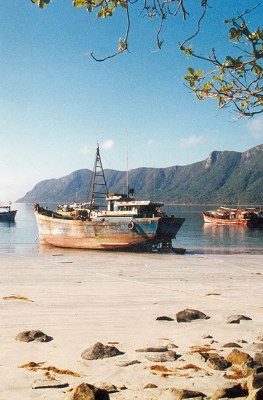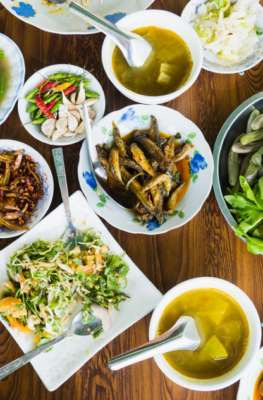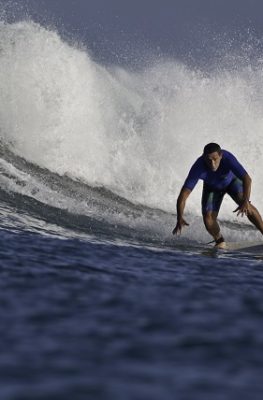Published on December 11, 2015
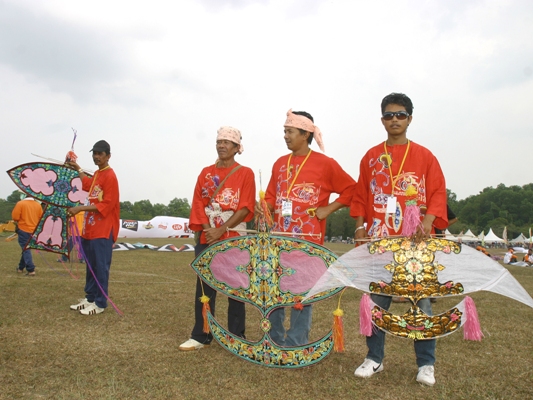
As cradles of cultures reaching back into the millennia, the countries of Southeast Asia have developed their own sports that still thrive, even as football and basketball dominate popular culture. Many of these traditional sports developed from ancient livelihoods: warriors of the former Khmer, Thai and Mon empires; the farmers in Malaysia’s rice paddies; and Javanese noblemen from present-day Indonesia will be surprised to find their particular diversions still at play in today’s modern competitive arenas.
Two of Southeast Asia’s foremost martial arts disciplines – Cambodia’s Bokator and Thailand’s Muay Thai – share common historical roots. While the ancient Theravada Buddhist kingdoms of Southeast Asia clashed often, they also learned from each other, with fighting techniques learned on the battlefield and passed down from master to student.
Those ancient martial disciplines were codified in the 20th century into separate national schools. In Cambodia, Grand Master San Kim Sean revived Bokator in the late ’90s, collecting knowledge dating back to the battlefield fighting skills taught at the time of Khmer king and Bokator practitioner Jayavarman VII.
Tourists can visit the Master’s school in Phnom Penh and learn to battle as the ancient Khmer warriors once did, decked out in the Khmer warrior uniforms that now serve as Bokator fighters’ outfits.
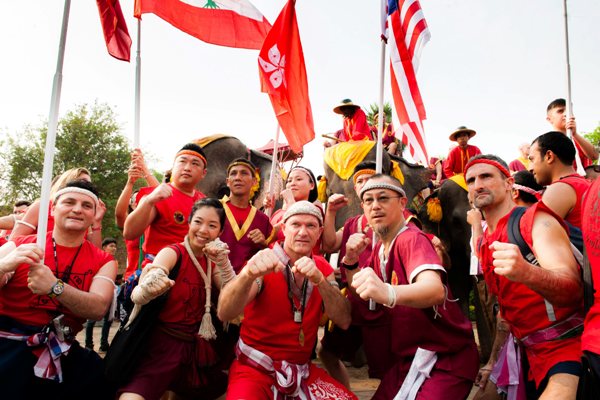
The kickboxing discipline of Muay Thai in Thailand is not only a spectator sport for tourists; visitors to Thailand can sign up to one of the many muay Thai gyms across Bangkok and Phuket. Many upscale gyms in these areas cater to muay Thai dilettantes; a few others allow foreigners to stay and train as a live-in muay Thai fighter, learning alongside local fighters and getting intimately familiar with the deadly art.
If watching muay Thai matches is more your thing, visit the two main stadia in Bangkok for your kickboxing fix: Rajadamnern stadium and the new home of Lumpinee stadium at Bang Khen each have stables of highly-skilled fighters, but only rarely do fighters at one stable challenge the other. Sanam Luang Park in Bangkok is another highly-regarded muay Thai venue – particularly during the Queen’s Cup and King’s Cup competition seasons, in August and December respectively.
For real Muay Thai enthusiasts, the World Wai Kru Muay Thai Ceremony (held annually in Ayutthaya during March) is an absolute must-see. Muay Thai boxers from more than 40 countries around the world come to pay respect to their teachers, watch traditional crafts like the making of Aranyik swords, and to pay homage to the legendary Muay Thai folk hero Nai Khanom Tom.
No Muay Thai event is complete without a major tournament, and the World Wai Kru Muay Thai Ceremony is no different. Visitors have Professional Muay Thai competitions between Thai and foreign boxers to look forward to!
It’s hard to think of Malaysia’s wau (kite) flying contests as a contact sport like muay Thai and Bokator, but in olden times it was played in deadly earnest. Kite strings used to be coated in glass powder; competing wau flyers would scrape each other’s strings, hoping the other’s would fray and snap from the resulting friction.
Harvest time remains the traditional season for kite-flying, and while fighting kites are almost a thing of the past, flying wau in the windy post-harvest climate is still popular among farming communities in Kelantan and Terengganu along peninsular Malaysia’s east coast.
Their kites are made from split bamboo and paper, bear intricate decorations of vines and flowers, and are named after the shape of their tails, from the wau merak (peacock kite) with a spreading triangular tail, to the wau bulan (moon kite), with its crescent-shaped tail. The Kelantan festival Pesta Wau Antarabangsa Kelantan is dedicated to this unique Malaysian art and skill.
You don’t have to fly a wau to enjoy it; shopping centres all around Malaysia sell wau sobek (decorative kites) that you can take home and hang on your wall.
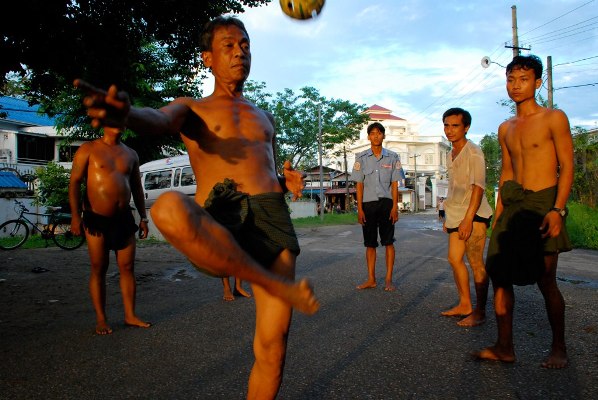
In Myanmar, the game of chinlone adds a twist to the Southeast Asian competitive game of sepak takraw, a form of volleyball using a cane ball and every part of the body but the hands and arms. Chinlone, unlike sepak takraw, is less competitive and more cooperative – a circle of six players take turns keeping the cane ball in the air, with special attention given to form.
Watching chinlone in play feels more like watching a dance performance than a game. The players keep the ball aloft with skillful maneuvers involving the feet, head, chest, and knees. Nobody scores points, as the ball just gets passed from one player to another. The most skilled chinlone players come from the ranks of the elderly, who presumably benefit from a lifetime of practice!
In Indonesia‘s special province of Yogyakarta, high Javanese culture finds its sports outlet in the archery sport named Jemparingan. Originally limited to the Javanese nobles around the Pakualaman duchy and the Yogyakarta sultanate, jemparingan is now embraced by commoners, though competition still takes place mainly on Kamandungan field just outside the Sultan’s Kraton in Yogyakarta.
Jemparingan tournaments take place as part of Yogyakarta festivities, such as the anniversary of the Sultan’s accession to the throne. On such occasions, Kamandungan field becomes a jemparingan tournament ground: competitors sit cross-legged at ground level and fire their arrows at a target called a bandul. Points are awarded for the number of arrows that strike the bandul – one point for hits on the white body, and three points for arrows that strike the bandul’s red-painted head.



